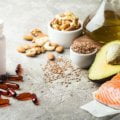Have you ever tasted an omelet with soy and oyster sauce? I never had until one day, while scrambling eggs, cheddar cheese, and crimson peppers, my eyes darted to the soy sauce and oyster sauce peeking out at the back of olive oil at the spice rack. This mixture of flavors had never occurred to me before; however, at that moment, I didn’t query my decision to douse the scramble with either sauce.
Swirling the spatula, I became overwhelmed with delightfully nostalgic feelings, like heat recollections of cracking eggs onto a frying pan and preventing over dim sum dishes with my sister. While happily chewing on my omelet, I wondered if, with the aid of including dashes of soy and oyster sauce, famous Chinese elements, I may want to name my cheesy egg scramble Chinese or not less than Chinese-inspired.
I’ve been outstanding among Chinese dishes, Chinese American dishes, and American dishes from a young age. These versions, among dishes including map tofu, crab rangoons, and burgers, are very straightforward. However, I have begun to impeach my right to make those institutions. Where did my self-assurance in defining ingredients below labels come from inside the first area? Do certain sauces, spices, or the absence of different ingredients make a dish inherently Chinese? Or do labels come from the Chinese chefs making ready meals?
Much like the various reports of Chinese Americans in the United States, no particular aspect, chef, or enjoyment can decisively define Chinese American delicacies. The phrases “Asian American” or “Chinese American” have been widely adopted by families and communities throughout you. S. Despite its ubiquity, these days, arriving at these universally recognized terms has been a half-of-century-old battle and one often disregarded in history books. Until the overdue 1960s, many Americans noted merchandise, groups, or people from East Asia as “Oriental” or “exotic”.
The phrases flowed onto storefronts, menus, or my mother’s SAT problem sheet. Frustrated by the West’s portrayal of East Asian human beings, Yuji Ichioka, an Asian-American historian and ethnic research activist, coined the term “Asian American” in 1968 to discharge the patronizing and imperialist terms. To the delight of many activists, the terms “Asian American” and “Chinese American” soon changed the condescending phrases of the earlier half of the century and sooner or later assumed visibility on restaurant awnings.
Ichioka paved the way for the primary Chinese immigrant restaurateurs to earmark their dishes as Chinese Americans. Since Chinese American cuisine’s first plunge into the culinary international, hundreds of restaurants have championed the Chinese American label. Chinese American fast-food chains and Panda Express have grown to be family names, and kung pao bird and broccoli beef have turned out to be late-night staples. Recently, Chinese American delicacies have been adapting and encompassing extra human reviews due to the inflow of 2nd and 1/3-generation Chinese-American chefs entering the culinary world.
Restaurants starting up in the past few years have uniquely advertised their meals as Chinese American in many ways that diverge from their original definition. Chef Irene Li’s Mei Mei advertises its pork and broccoli scallion pancake sandwiches and smoked haddock cakes in Boston. Danny Bowien’s Mission Chinese Food populates its menu with Kung Pao Pastrami and Sichuan Carbonara.
Not only does their Chinese American food draw from their private experience growing up in various countries and favored non-Chinese dishes, but it’s also tasty. By challenging previous assumptions about the creative limits of food, those cooks are expanding how human beings consume and consider Chinese American cuisine as it should be.
New endeavors in Chinese American and fusion delicacies have opened excellent new doorways for cooks and multiplied the tastes of foodies within the United States. It is also unfair to discredit and disrespect the history of Chinese American food, which allowed it to benefit its countrywide platform. In early April, food media writers unleashed a flurry of articles condemning nutritionist Arielle Haspel, the owner of NYC’s newly opened Chinese American eating place Lucky Lee’s.
Haspel claimed to healthify Chinese food because it was a deleted Instagram post. “We heard you’re captivated with lo mein but hardly ever consume it. You stated it makes you feel bloated and icky tomorrow. Well, wait till you slurp up our HIGH lo mein. Not too oily. Or salty,” she wrote. Lucky Lee’s portrayal of Chinese food highlights the importance of deliberately questioning approximately Chinese American meals, history, and how we pick to transform and market them.
Chinese American and American cooks today have redefined the limits of Chinese American culture through the lens of their upbringings; their delicacies display the converting demographics of the USA. The next time you whip up a few non-Chinese meals with hoisin and XO sauce, know that it’s miles a testament to the opportunities of diasporic delicacies.












